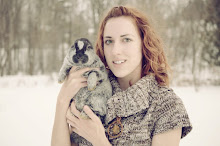I've been running into the same faults with my Bruns in every litter. The gene pool is very limited so it's really hard to breed out certain faults as it's almost guaranteed to be carried by every other Brun out there. Line breeding heavily tends to suppress things like max litter size potential, and max weight potential. So what do you do when you've hit a wall? Out cross your herd, carefully.
I've run into the problem that my Brun does are producing 3 kits per litter (not very impressive). All my does also seem to have the same PH level that makes it all the more friendly environment for the Y chromosome, which results in a greater number of bucks being born, surprise it's not the bucks fault.
So how do you out cross while maintaining the breed characteristics. You could potentially find a large chocolate rabbit, and use it and then work your tail off getting the proper silveringbody type, and fur back or you can take the easy route. Use Champagne D'Argents.
At the base of it all Champagnes and Bruns are self coloured rabbits with the silvering gene. The only real difference between them is colour and size. Which are two very easy things to fix. The type is already there, the fur, and the silvering. All you're doing is opening up a blood line and changing the colour and size.
Lets talk genetics for colour: (the underscore is where recessive information can be filled in if known)
A Champagne is: aaB_C_D_E_sisi . A Brun is: aabbC_D_E_sisi
A=Agouti
aa= self
Aa= Agouti that carries self
B=Black
bb=Brown (chocolate)
Bb= Black the carries brown (Chocolate)
C=Normal colour (like black)
ch= Himalayan
cc= Albino
Cc= Normal colour that carries albino
D=Dense colour (black, chocolate)
dd= Dilute colour (blue, lilac)
Dd= Dense colour that carries dilute (Chocolate that carries lilac, black that carries blue).
E= Extension series. E is normal (ie Black)
e= Non extension (like tort or red)
Si= Normal
sisi=silvering
SIsi= Normal that carries silvering (this is an incomplete dominant gene so carriers often show silvering).
So that's genetics in a nut shell. I'll also point out lowercase letters are recessive. For instance bb (chocolate) when two chocolates are bred together they cannot produce black.
So lets take aaB_C_D_E_sisi . A Brun aabbC_D_E_sisi
You breed a Brun to a Champagne you're offspring will genetically look like this : aaBbC_D_E_sisi a black rabbit that carries chocolate. Bred back to a Brun or another black rabbit that carries chocolate you'll get 50% chocolate and 50% black in the litter.
Chocolate and Black are two of the most compatible colours out there, They in no way shape or form interfere with each others colour negatively. In fact it is widely believed that using blacks in your chocolate breeding program keeps the chocolate colour rich and prevents it from fading and turning greyish. (All my black Mini Rex carry chocolate).
Let's say you want to fill in the genetics of a Brun and your Brun has produced a lilac, and a rew and no non extensions. That rabbit would look like this genetically aabbCcDdEEsisi
Size between Bruns and Champagnes is not that different but different enough to worry about. You have to be very selective. My Brun bucks tend to be on the smaller side of the scale for a Brun, so I crossed one with a wondrous Champagne Doe who also is small for a Champagne but has fantastic type.
I have one breeding age out cross doe she just had her 2nd litter of 9 kits (all of which are fantastic looking Bruns). So far out crossing has increased litter size and increased the number of does I get per litter. And for this litter 3/4 of their pedigree is pure Brun.
I'll talk about silvering later. It's late and I still haven't done chores. I hope this post made a bit of sense.
Monday, March 7, 2011
Subscribe to:
Post Comments (Atom)




No comments:
Post a Comment